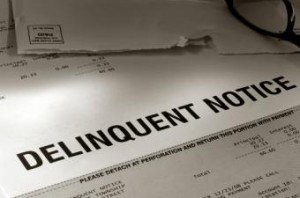 Seriously delinquent mortgage loans, those 90 days or more overdue, have declined to the point where they are less than one quarter of what they were at their peak six years ago, according to a new State of the Consumer [1] report from Stephanie K. Mah, Director of Research, Structured Finance, Morningstar Credit Ratings [2].
Seriously delinquent mortgage loans, those 90 days or more overdue, have declined to the point where they are less than one quarter of what they were at their peak six years ago, according to a new State of the Consumer [1] report from Stephanie K. Mah, Director of Research, Structured Finance, Morningstar Credit Ratings [2].
The substantial decline in serious mortgage delinquencies contrasts with that of other types of loan delinquencies that are on the rise, such as student loan debt and auto loan delinqucies, Mah reported.
Citing data from the New York Fed, Mah reported that both mortgage and credit card delinquencies have improved, with the share of seriously delinquent mortgages falling from their peak of 8.9 percent in the first quarter of 2010 down to 2.1 percent at the end of the first quarter in 2016. Credit card delinquencies fell from 13.7 percent in Q1 2010 down to 7.6 percent by the end of Q1 2016.
“Low interest rates made it easier for consumers to either refinance or stay current on their debt obligations,” Mah said.
Meanwhile, competition among underwriters led to an increase in subprime auto loans, which in turn led to a rise in the number of 90-day auto loan delinquencies (3.4 percent in Q4 2015 up to 3.5 percent in Q1 2016). Student loan debt, one of the most frequently cited barriers to millennials achieving homeownership, has seen its share of delinquencies rise from 8.5 percent in 2011 up to 11.0 percent in the first quarter of 2016—and this number may be understated, since the New York Fed data from which the number was derived does not consider loan balances that are in deferment or forbearance.
“With the run-up in student loans made to borrowers attending for-profit colleges (typically marketed to a lower income demographic), student loan delinquencies increased as many of those graduating students were unable to find employment,” Mah said. “For autos, the recent marginal increase in delinquencies can be attributed to the rise in subprime origination volume (loans targeted at less creditworthy borrowers). The low interest rate environment, combined with a generally healthy jobs market has resulted in fewer delinquencies across mortgages.”
According to Mah, “Unfavorable warmer weather conditions and some slowing in employment caused consumer spending to slow modestly in the first quarter, as it often does,” dragging Q1 GDP growth down to 1.1 percent in the final estimate from the Bureau of Economic Analysis. Bob Johnson, Morningstar’s director of economic analysis, estimates GDP growth between 2.0 percent and 2.5 percent in the second quarter but notes it will probably be more toward 2.0 percent, given the weak GDP growth in Q1. Last year in Q2, GDP growth shot up to 3.9 percent after a weak first quarter.
Click here [1] to view Morningstar’s complete report.